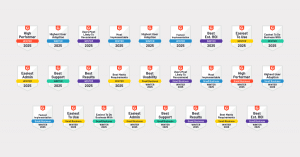The concept of unearned income — the chicken or the egg
The concept’s pretty simple — it’s not your money until you’ve done the work. That’s fairly straightforward. It’s a matter of not counting your chickens, as they say, before they’re hatched. Even if you are sitting on some fairly sure-fire eggs.
Let’s say, for example, you said to somebody, ‘I’m going to design you a new house’ — you might have an arrangement where you get some money upfront, yet you haven’t designed the house. You just have the money.
What most people do is put that money in the bank and consider it to be their money. But it’s not really. It’s like a deposit to pay for work that they haven’t yet done. It becomes their money only after they’ve done the work. So that’s what unearned income, and our August update, is all about.
The problem — when did the chicken cross the road?
The problem comes when you get audited by the tax office. They want to be able to differentiate between money that you’ve legitimately earned and money that, technically, you owe other people.
If you were not to design that house we spoke of before, you’d have to give that money back because it was never your money. It was a deposit for work you were going to do, and you haven’t done it. If you don’t do it, you’ve got to give that money back, and the tax department wants to know that’s recognised. Enter: IFRS15.
IFRS stands for International Financial Reporting Standard and it’s about as exciting as the name suggests. It’s an accounting standard that deals with this unearned income issue. Everybody’s meant to be using it. A lot of people probably aren’t because it feels like more trouble than it’s worth.
However, with the August Synergy update we help you separate your earned chickens from your unearned eggs and meet the requirements of IFRS15. And it’s easy.
If you run your practice in a very simplistic manner, you probably have a bank account, the money goes into the bank account, and as you do the work you say, ‘we’ve earned that money’. In your accounting system you generally have two buckets of money — there’s the one for money you’ve earned, and a separate one for what’s often called ‘deferred income’ which you can actually recognise later. The problem is, knowing when to move money from your unearned income account, across to the revenue account.
The feature — the slider that laid the golden eggs
As a second part of the project performance — earned value management (EVM) release, we’re adding more value to the fact that we’ve asked people to tell us how far through they are in any piece of work they’re doing.
In the project performance release, when you told us how far through the work you were, we could use that to calculate a prediction of when we think you’ll finish the job and what we think it’s going to cost you to complete. You or your project managers do this by keeping the percent complete slider up-to-date on all the stages of your projects.
Because you’ve put in that percent complete, if there was some kind of a deposit, then we also know how much of that deposit can be released from the deferred income account and put into cash flow, based on the slider.
What this release does is link that percent complete slider position to your company’s recognisable income report. It tells you when your chickens are hatched, when they should cross, and how many golden eggs you’ve got.
With the unearned income update, there are now two different parts of your business that can both leverage benefit from the one slider action:
- The project managers — who tend not to really care too much about what’s happening in accounts. They leave that to the accounts people. They just want to know when their projects are going to get finished and whether they’ll be on time and budget.
- The CFO — who now has a reliable, auditable, completely justifiable-to-the-taxman, way of showing how you’ve calculated how much of that revenue that was deferred can be moved into cash.
We get double the value out of the way we’re using that percent complete slider. Double the value out of that action of just moving it to reflect completed work.
It’s one of those cases where one feature benefits another feature, the whole is greater than the sum of the parts. If you just have an EVM system and you tweaked that slider, well that just benefits the project manager. And if you just had an unearned income system where you tweak a slider, well that would just benefit the CFO. We’ve integrated those features so that the one action benefits more than one person.
Now that we’ve added this feature to Synergy, we’ve made it as easy as we can possibly imagine to adhere to that IFRS15 standard. All you have to do is get the relevant staff to tell you how far they think you are through this body of work, and then everything happens automatically in the background because you updated the slider.
It’s a chicken that keeps laying golden eggs, and a system that only counts the hatchlings. Holy cluck, it’s good.
Recommended reading


